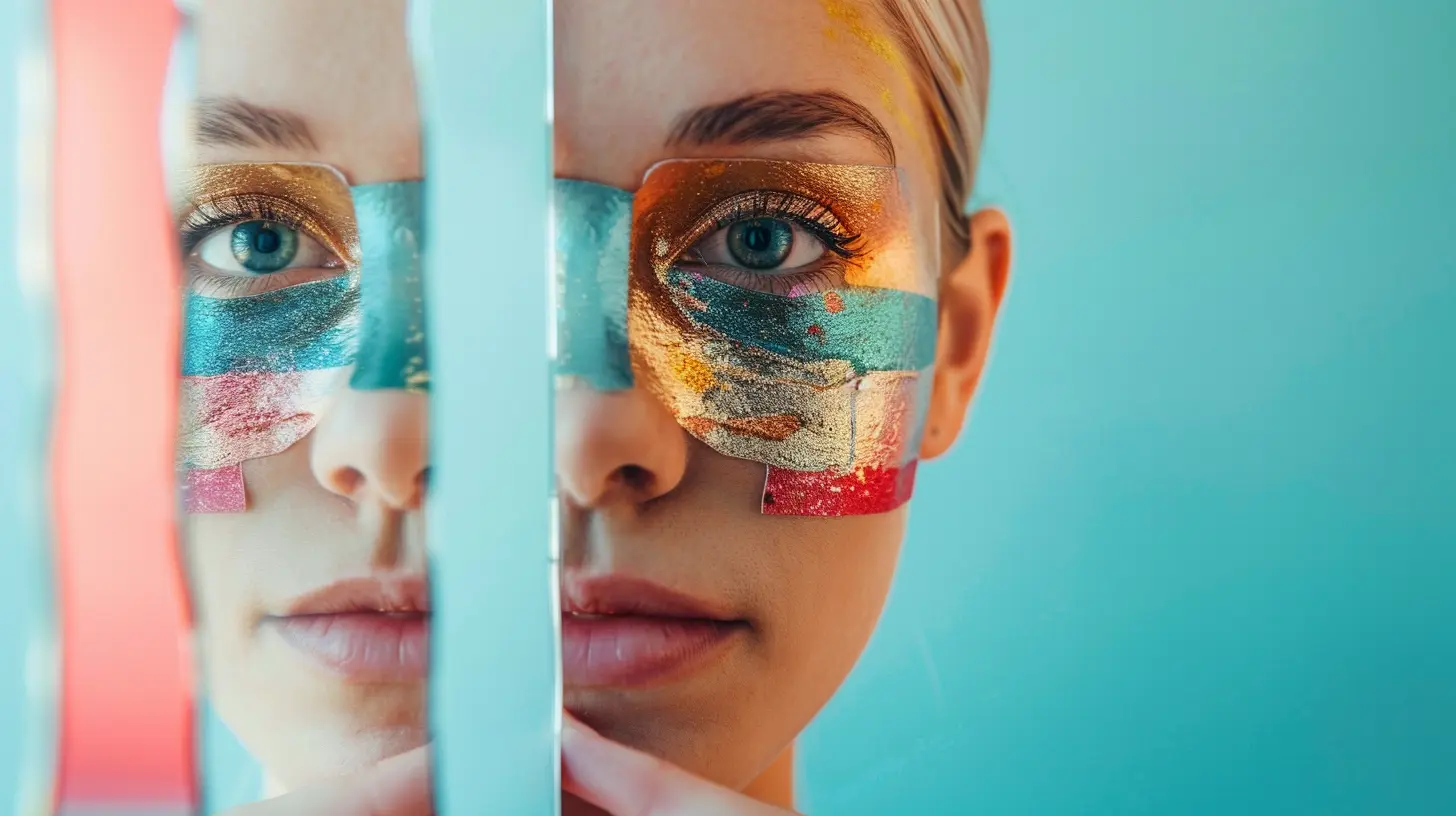Building a Positive Body Image: Strategies for Self-Acceptance
6 October 2025
Having a positive body image can sometimes feel like climbing a steep hill with a backpack full of unrealistic beauty standards. It’s tough out there. We’re constantly bombarded with glossy, “perfect” images on social media, magazine covers, and advertisements. But here’s the truth: no one is perfect, and perfection isn’t the goal.
Instead, what really matters is learning to see your body for what it is — uniquely yours, valuable, functional, and worthy of love just the way it is. That’s where self-acceptance comes in. Let’s walk through some down-to-earth, practical strategies to build a healthier, more positive relationship with your body.
What is Body Image Anyway?
Body image isn’t just how you look in the mirror — it’s how you feel about your body. It’s the mental picture you have of yourself, and whether that picture feels empowering or defeating.There are four main aspects of body image:
- Perceptual – how you see your body
- Affective – how you feel about your body
- Cognitive – what you think about your body
- Behavioral – how your thoughts and feelings affect your actions
A positive body image means that you accept your body’s shape, size, and abilities. You don’t have to love every inch every single day (let’s be real, nobody does), but you need to treat yourself with kindness and respect.
Why Does Body Image Matter?
Let’s get real—body image has a huge impact on mental health. Poor body image can lead to anxiety, depression, eating disorders, and low self-esteem. It messes with relationships, career confidence, and everyday happiness.On the flip side, positive body image:
- Boosts self-worth
- Improves mental well-being
- Promotes healthier lifestyle choices
- Strengthens emotional resilience
Feeling good about your body leads to feeling good in general. It’s that simple.
Strategy #1: Challenge the Inner Critic
You know that little inner voice that says, “Ugh, look at your thighs,” or “You’re not fit enough”? Yeah, it’s time to put that voice in check.Start by identifying when these negative thoughts creep in. Now, ask yourself:
- Would I say this to a friend?
- Is this actually true, or just something I’ve been conditioned to believe?
- What’s the benefit of thinking this way?
Challenge those thoughts. Flip the script. When your mind says, “I hate my stomach,” respond with, “My body deserves kindness. This stomach has kept me alive.”
Think of your inner critic like a bad roommate — you don’t have to believe everything they say.
Strategy #2: Detox Your Social Media Feed
Let’s face it — social media can be toxic. Scrolling through a highlight reel of influencers with Photoshop-perfect bodies can spiral anyone into a funk.But guess what? You control what you see. Curate your feed like your mental health depends on it — because it does.
Unfollow or mute:
- Accounts that make you feel “less than”
- Diet culture promoters
- “Before and after” transformation feeds
Follow instead:
- Body-positive creators
- Diverse and inclusive accounts
- People who celebrate authenticity over aesthetics
Choose content that lifts you up, not content that drags you down.
Strategy #3: Talk to Yourself Like You’d Talk to a Friend
Imagine someone you care about deeply—maybe your best friend or a sibling—telling you they feel ugly or too big or not good enough. What would you say?You’d probably be kind, supportive, maybe even give them a heartfelt pep talk.
Now do that for yourself.
It might feel weird at first, but treating yourself like a friend is a powerful form of self-care. Practice affirmations like:
- “I am more than my appearance.”
- “My body is strong and capable.”
- “I deserve respect, no matter my size.”
Start your day with one positive affirmation and see how it reshapes your self-talk over time.
Strategy #4: Focus on What Your Body Can Do
Instead of obsessing over what your body looks like, start appreciating what it can do.Can it lift groceries, hug a loved one, dance to your favorite song, or walk through a beautiful park? That’s powerful stuff.
Celebrate your body’s abilities—big or small.
Try journaling every day for a week. Write down:
- One thing your body helped you do today
- One moment you felt connected to your body
- One way you’ve cared for your body today
This shift from aesthetics to function can be a game-changer.
Strategy #5: Ditch the Scale (Seriously)
If stepping on the scale ruins your day, why are you doing it?The number you see doesn’t measure your worth, kindness, intelligence, or joy. It doesn’t reflect your value or your potential.
Weight fluctuates naturally and is influenced by dozens of factors — hydration, hormones, time of day, and more.
Instead of tracking your weight, check in with better indicators of well-being:
- Energy levels
- Mood and emotions
- Strength and stamina
- Sleep quality
When you stop living and dying by the scale, you give yourself permission to feel free.
Strategy #6: Surround Yourself with Support
Your environment deeply shapes how you see yourself. If you’re constantly around people who criticize their own bodies or yours, it’s tough to stay positive.Seek out people who:
- Treat themselves with compassion
- Speak kindly about all body types
- Support your self-love journey
This includes friends, family, co-workers — even professionals like therapists or support groups. Therapy, especially cognitive-behavioral therapy (CBT), can be highly effective in addressing distorted body image issues.
You’re not in this alone, and you don’t have to be.
Strategy #7: Move for Joy, Not Punishment
Exercise is a wonderful way to connect with your body — but only when it’s done for the right reasons.If you’re hitting the gym purely to shrink your waist or “earn” your dinner, it becomes punishment. But if you move in ways that feel good — dancing, hiking, yoga, swimming — it becomes celebration.
Ask yourself:
- What kind of movement do I enjoy?
- How does my body feel during and after?
- Am I moving to care for myself, or to punish myself?
Let movement be a love letter to your body, not a slap on the wrist.
Strategy #8: Wear Clothes That Make You Feel Good
Too often, we squeeze ourselves into clothes that don’t fit or feel right just because they’re trendy or a certain size.Your clothes should fit you — not the other way around.
Ditch the size tags. Forget what you think you should wear. Dress in a way that makes you feel confident, comfortable, and uniquely yourself.
If an outfit makes you smile in the mirror, it’s the right choice. Fashion is self-expression, not self-oppression.
Strategy #9: Be Mindful of Diet Culture
Diet culture is sneaky. It shows up in casual conversations, new “wellness” trends, and even in compliments like “You’ve lost weight — you look great!”The problem? It teaches us that smaller always means better — and that’s simply false.
Be critical of:
- Fad diets
- “Clean eating” obsessions
- Weight-loss challenges
- “Cheat day” mentalities
Instead, embrace intuitive eating — listening to your body’s hunger and fullness cues, nourishing yourself, and letting go of guilt and shame around food.
Freedom from diet culture equals freedom to truly enjoy life.
Strategy #10: Practice Gratitude for Your Body
When was the last time you thanked your body?Try this: Stand in front of a mirror and name three things you’re grateful for about your body. Maybe it’s your strong legs, your warm smile, or even just the fact that your heart keeps beating.
Gratitude shifts your focus from what’s “wrong” to what’s right.
Your body has carried you through a lot. Illnesses. Breakups. Stressful days. Late nights. Joyful moments. It deserves your appreciation, not your judgment.
Final Thoughts: Progress Beats Perfection
Building a positive body image isn’t a one-time achievement; it’s a lifelong practice. Some days will be easier than others. Some days you’ll feel amazing, and others might test you.That’s okay.
This journey is about progress, not perfection. Every kind word, every brave choice, every act of self-care — they all add up.
So take a deep breath. Give yourself grace. And remember — your body is not a problem to fix. It’s a miracle to cherish.
all images in this post were generated using AI tools
Category:
Body ImageAuthor:

Eliana Burton
Discussion
rate this article
1 comments
Landon Romero
This article provides practical strategies for fostering a positive body image through self-acceptance. By emphasizing self-compassion and challenging negative thoughts, individuals can cultivate a healthier relationship with their bodies, ultimately enhancing their overall mental well-being and self-esteem.
October 18, 2025 at 4:57 AM

Eliana Burton
Thank you for your insightful comment! I'm glad you found the strategies helpful for fostering self-acceptance and enhancing mental well-being.


